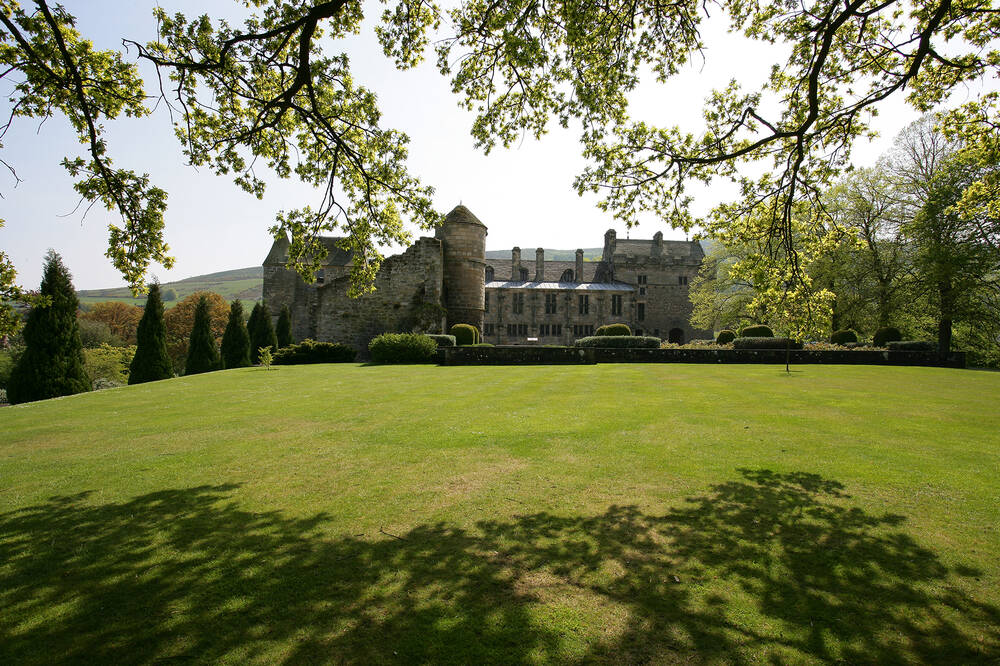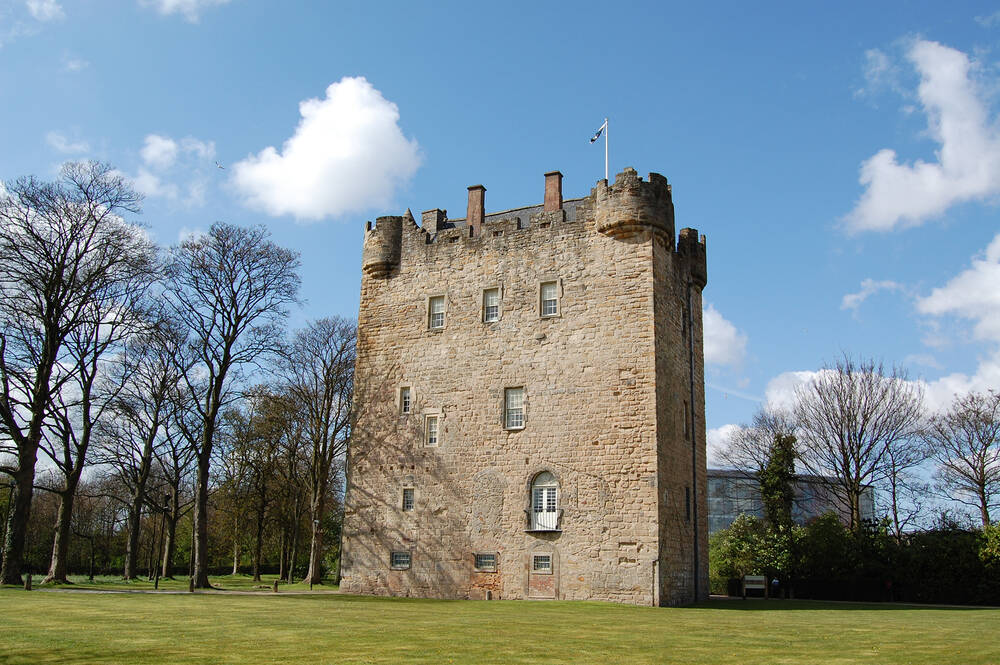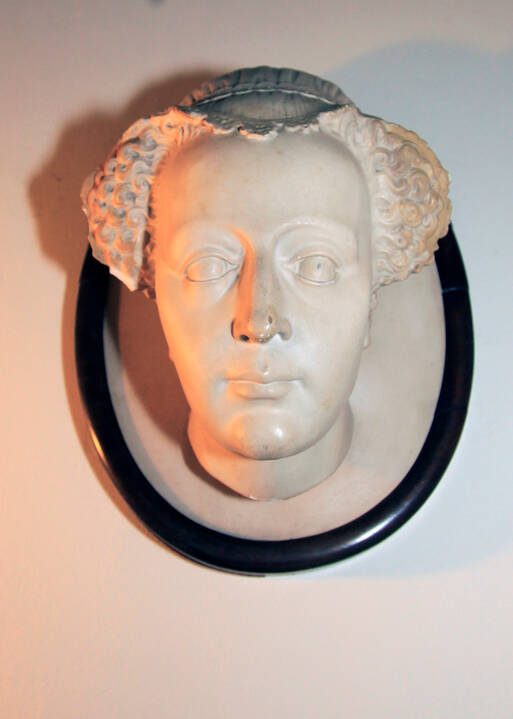When Did Mary Queen of Scots Go Back to Scotland
1542: Mary's birth
Mary's father was King James V of Scotland and her mother was Mary of Guise. They had two sons but both died in infancy within hours of each other in 1541, before Mary was born.
After defeat at the Battle of Solway Moss in November 1542, James returned to Falkland Palace in Fife and went to bed with a high fever. On 8 December, a message came from Linlithgow Palace that his wife had given birth to a daughter instead of the hoped-for son. James believed that the Stuart dynasty was at an end – he feared that a woman could not rule his nation.
King James V died six days later and baby Mary became Queen of Scotland.
1543: The 'Rough Wooing'
Both Protestant England and Catholic France wanted Mary to marry a royal from their country in order to gain control over Scotland. Mary's great-uncle, Henry VIII, arranged for Mary to marry his son Edward, hoping that this would unite Scotland and England. However, many Scots opposed this treaty and broke the agreement. Henry was furious and sent his army to attack Scotland. The 'courtship' became known as the 'Rough Wooing'.
French troops helped the Scots to fight the English and it was agreed that Mary would marry the Dauphin (the eldest son of the French king). Mary left for France when she was 6 years old.
1548: Mary's life in France
Mary was brought up with the children of King Henri II of France in magnificent royal palaces, and became very close to Princess Elisabeth. Mary learned to speak French, Italian, Spanish and Latin. She was also taught to sew, write poetry and to play musical instruments. Mary enjoyed riding and hunting in the French countryside.
In April 1558, at the age of 15, Mary married the 14-year-old Dauphin Francis in Notre Dame Cathedral, Paris. A year later, King Henri died, and Mary became Queen of Scotland and France. However, her reign of France was brief, for in 1560 Francis became ill and died. The crown passed to his younger brother.
Mary's mother (who had ruled Scotland as regent) had also died in 1560, and so Mary returned to Scotland in 1561. On 18 August, she sailed into Leith. Dressed in mourning, Mary then travelled to the Palace of Holyroodhouse in a grand procession, where the way was lined with a cheering crowd.
1565: Marriage to Lord Darnley
For the next 4 years, Mary was busy ruling Scotland. The royal court needed to travel around the country, meeting with lairds and other officials. Mary loved horse riding, dancing and hunting game. She also enjoyed sport and would play real tennis when at Falkland Palace.
Mary needed to marry again to have a child who would be heir to the Scottish throne. Many princes, lords and nobles wanted to marry her, but then she met her cousin Lord Darnley. Mary immediately fell in love with him – he was tall, ambitious and good looking. They married on 29 July 1565 at Holyroodhouse.
Few people approved of her choice. Elizabeth I of England saw this marriage as Mary's attempt to strengthen her claim on the English throne because Darnley had English royal connections. It soon became obvious that Darnley had married Mary just to get the throne. Mary gave him the title of king but kept all the real power to herself; he resented this.

1566: The murder of Riccio (Rizzio)
Lord Darnley was jealous of Mary's friend and advisor, David Riccio, since they spent a lot of time together. In March 1566, Mary had just begun supper with Riccio and some friends in Holyroodhouse, when Darnley came into her room with Lord Ruthven and other plotters. Lord Ruthven was dressed in armour. Riccio hid behind Mary but they pulled him out and stabbed him. He was dragged away screaming and was stabbed 56 times outside the room.
Mary and Darnley's son, James, was born 3 months later on 19 June 1566.
1567: The murder of Lord Darnley
Just a few months after his son was born, Darnley was recovering from an illness at a house near Edinburgh. Mary nursed him for a few days but one evening (in February 1567) she went out. Soon after she left, the house was blown up. The Earl of Bothwell's messengers found Darnley and his servant dead in the garden. Witnesses said that they heard Darnley pleading for mercy. He appeared to have been strangled.
At the time some people believed that Mary was involved. Others believed that the Earl of Bothwell and other conspirators had planned to blow up the house. Bothwell was asked many questions by the Scottish Parliament, but he was not accused of the killings. The identity of Darnley's killer(s) remains a mystery.
1567: Mary and the Earl of Bothwell
Mary was now very unpopular. It did not help that she did not behave like a grieving widow – she was seen playing golf at St Andrews only days after Darnley's death.
The Earl of Bothwell divorced his wife and, just 3 months after Darnley's murder, Mary married Bothwell on 15 May 1567. This shocked many Scottish people, although some believed that Mary was forced to marry him.
Protestant nobles united against Mary and Bothwell, and eventually met Mary and Bothwell's army at the Battle of Carberry Hill on 15 June 1567. Mary surrendered, her troops deserted her and Bothwell fled. Mary was taken as a prisoner to Lochleven Castle.
Bothwell was captured and imprisoned in the Danish fortress of Drasholm. He was chained to a pillar half his height so that he could not stand upright, and was left for 10 years until he died.
Mary was placed in a cramped tower in Lochleven Castle, situated on an island in Loch Leven. Mary was forced to abdicate and her young son was crowned King James VI of Scotland. James was in the care of the Earl of Mar, who had also been Mary's guardian. Whilst at Lochleven Mary miscarried the Earl of Bothwell's twins.
With help from a servant at the castle, her second attempt at escape was successful. Disguised in servant clothing, she escaped to a waiting boat and reached the shore safely, where an ally, George Douglas, was waiting. Mary managed to raise an army but was defeated by her Scottish enemies at the Battle of Langside on 13 May 1568. In desperation she fled to England and appealed to her cousin, Queen Elizabeth I of England, for help.

1568: Mary and Elizabeth
Elizabeth was the daughter of Henry VIII of England and Anne Boleyn. She was the granddaughter of Henry VII.
Mary, daughter of James V of Scotland and Mary of Guise, was also related to the English royal family as she was the great-granddaughter of Henry VII.
Elizabeth was a Protestant and Mary was a Catholic. Some Catholics did not accept the marriage of Elizabeth's parents because it was a Protestant wedding. They thought that Mary should be queen instead.
As a result of an enquiry into Darnley's murder (later thought to be based on forged letters), Mary was imprisoned by Queen Elizabeth I of England. She was kept prisoner in a number of different castles and grand houses for nearly 19 years. Elizabeth treated Mary well but always had her guarded carefully. They never met.
During her years of imprisonment Mary had her own servants, including a physician and a secretary. She enjoyed embroidery, played cards, had visitors and kept pets. But Mary longed for freedom and to be reunited with her son.
As a result of numerous plots to set her free, Mary was not allowed to communicate by letter. In 1585 Mary found a way to smuggle letters in a beer barrel. Sir Anthony Babington wrote to Mary and suggested that Elizabeth should be killed, the Catholic religion restored in England and Mary become Queen of England. Mary agreed to this by a coded reply. However, it was a trick set up by Elizabeth's spy master, Sir Francis Walsingham.
1586: The trial and execution of Mary
Mary was put on trial for high treason and found guilty on 15 October 1586.
On 8 February 1587 Mary was beheaded at the Great Hall of Fotheringhay Castle. She was dressed in black with a white veil, and carried a crucifix and writing book. Mary was led to the scaffold and prayers were read. Mary removed her dress to reveal a red petticoat – recognised as the colour of martyrdom.
After three blows of the axe Mary was dead. The executioner held her head up to the crowd in the hall. The head fell to the ground, leaving him holding a wig – Mary's real hair was thin and grey. Some say that her dog was found hiding under her skirts, covered in Mary's blood. Mary's clothes, crucifix and writing book, along with the executioner's block, were all burned in the courtyard so no relics remained. Her body was embalmed and incarcerated in a heavy lead coffin which remained unburied in Fotheringhay Castle until 30 July 1587. It was then taken, at night for fear of public protest, to nearby Peterborough Cathedral.

1603: Union of the Crowns
Queen Elizabeth I of England died in 1603. She had no children. This meant that Mary's son, James VI of Scotland, also became James I of England, uniting the crowns of Scotland and England. The two parliaments remained separate. In 1612 James had Mary's body moved to Westminster Abbey, the traditional burial ground for kings and queens.
Stay in touch
Keep up to date with the latest news from the Trust, ideas for great days out and the work that we do for the love of Scotland.
When Did Mary Queen of Scots Go Back to Scotland
Source: https://www.nts.org.uk/stories/mary-queen-of-scots
0 Response to "When Did Mary Queen of Scots Go Back to Scotland"
Post a Comment